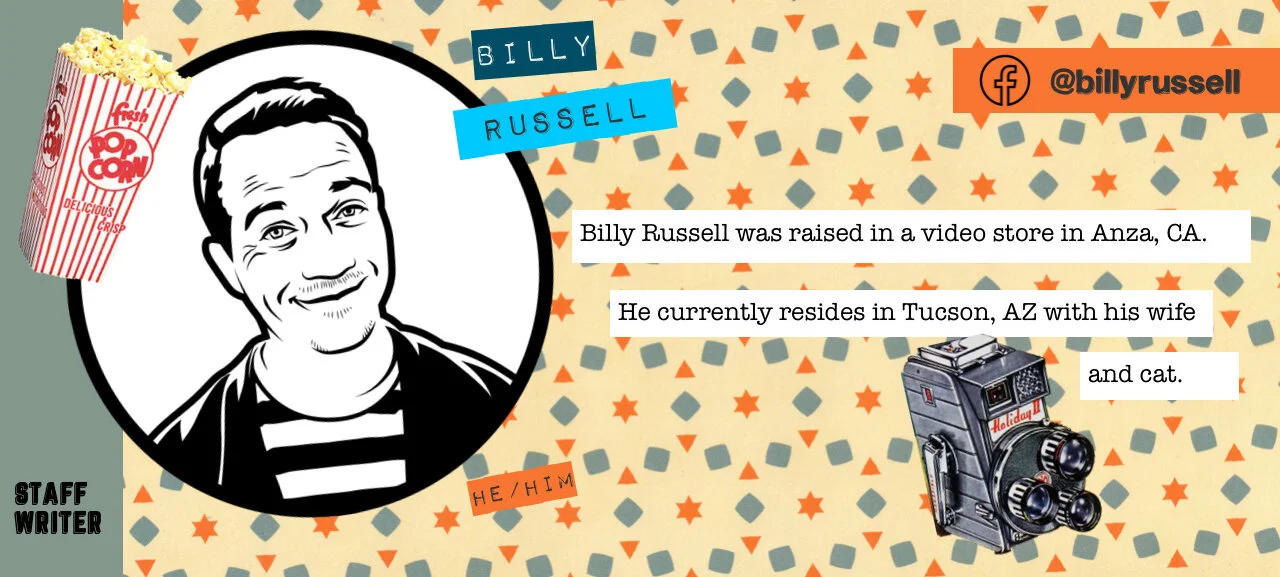Coppola's DRACULA went back into the past and became a surprising hit
by Billy Russell, Staff Writer
Sometimes, out of nowhere–like today, for example, while taking a shower–I think of how strange it is that Francis Ford Coppola’s adaptation of Dracula, sometimes referred to as Bram Stoker’s Dracula, was a financial success.
Usually, a film like this version of Dracula would turn people off. Francis Ford Coppola wanted to capture a time and a place and he did this by recreating special effects the practical way they had been achieved in the 1930s. Take for instance a shot during a travel montage. In this shot, in the foreground is a diary containing handwritten language working as exposition and a train goes by in the background. The easiest way to achieve this would be to film a close-up of a book, then get a shot of a train and sort of overlay them together. But this would look too “normal” too “real.” To mimic the look and feel, to make the time and place of Dracula feel adequately alien and dreamy, the book is instead a huge, oversized prop and the train exists in the same shot, but it’s a mintature. It’s a blink-and-you’ll-miss-it moment, but the movie is full of hundreds of these little moments. Coppola was dead-set on getting his version of the movie exactly the way he wanted it, sometimes to the annoyance of the studio who was nervous, given his history of flops that preceded this production.
It has all the benchmarks of a misunderstood-at-the-time classic that would find success later, first on VHS, then through re-issues on DVD and Blu-ray, or even find new life on streaming. Instead, it more than doubled its box office in its theatrical run, was equally successful through rental chains and is pretty well regarded and fondly remembered. There were even video game adaptations. It was an instant classic, filled with iconic imagery and spoofed soon after its release on a “Treehouse of Horror” special of The Simpsons.
Some movies are defined by its style. Dracula is gorgeous to look at and behold. Most of its special effects are performed in-camera, which has the subliminal effect of helping the audience feel more like a participant in what’s happening on screen. In a way, you feel like it's taking place on a stage, an insanely complex gran guignol production that lives and breathes before your eyes. Obviously, it’s all movie magic, but though filmic language, the special effects feel alive. When the eerie coach driver reaches out with its endlessly long arm, and the effect is achieved through clever camera movements instead of a prosthetic arm or computer effects, it’s more like watching a magician perform a trick, and you wonder how they even pulled it off.
Even the performances feel like they take a backseat to the sets, the lights and the sounds that go bump in the night. It’s not that everyone is restrained in their performances, it’s that even though they’re hamming it up as much as they can, they’re only doing so to keep up with the spectacle at the movie’s forefront. Gary Oldman as Dracula shapeshifts into werewolves and bats, he crawls along a castle’s wall like a spider, and somehow it doesn’t feel silly, it feels totally appropriate for what it is.
It’s this kind of uncompromising vision that usually results in a bloated mess, one of those movies everyone remembers as an ambitious failure. Hell, Tom Waits even shows up as the mad Renfield, screaming and howling at the moon (his scenes did not make it to the television broadcast version). Somehow, Dracula did not fall victim to what felt like its destiny. Perhaps because it’s still just Hollywood enough to work. While one of the most faithful adaptations of the original novel, especially at the time, it embellishes enough sex and violence to spice things up. It has then-teenage-heartthrob Keanu Reeves woefully miscast, clearly there to attract audiences with a young, popular name.
A time and a place has to feel like more than a gimmick as a movie’s setting. With Dracula, the 19th century is the only time it could have worked. The 19th century vision of Dracula is created through 1930s technology and a 1990s Francis Ford Coppola desperate for a hit after a series of flops threatened to forever sink his directorial career. It didn’t matter that he’d been involved in some of the best movies ever made, whether as a writer, director, producer or all three, he was considered box office poison and he used every trick up his sleeve that he had for Dracula. Everything came together for this movie. It was the perfect storm necessary to create one of the strangest classics ever made.


